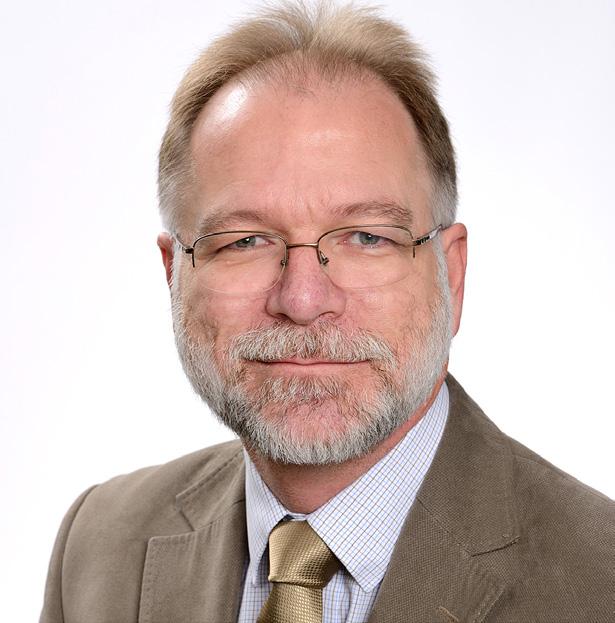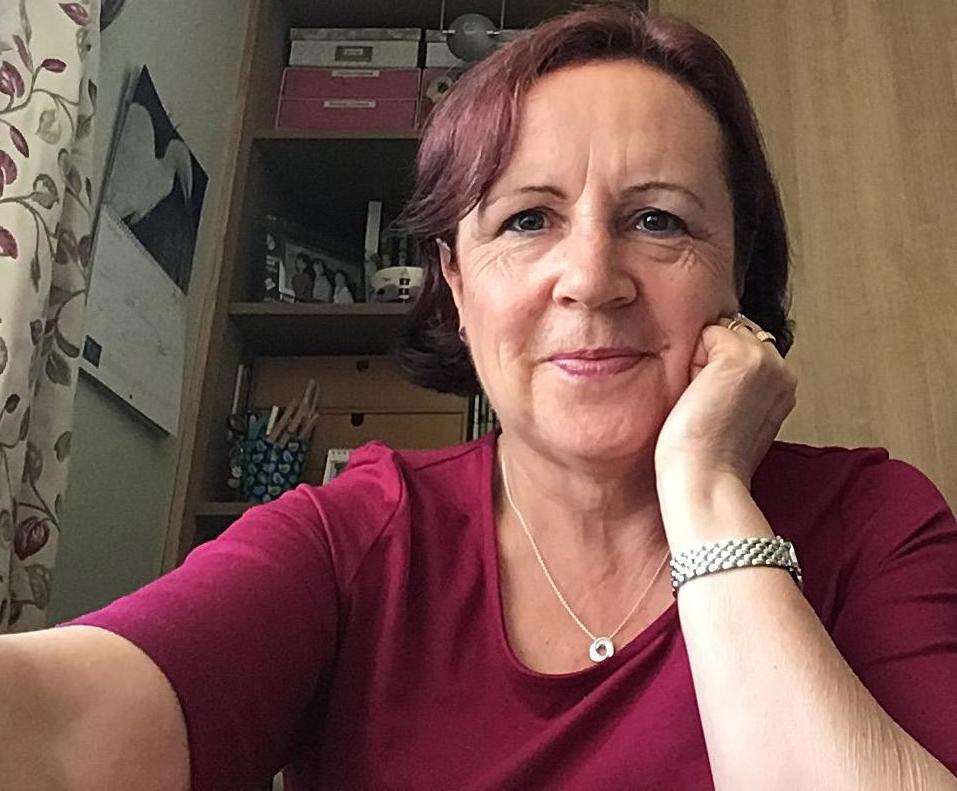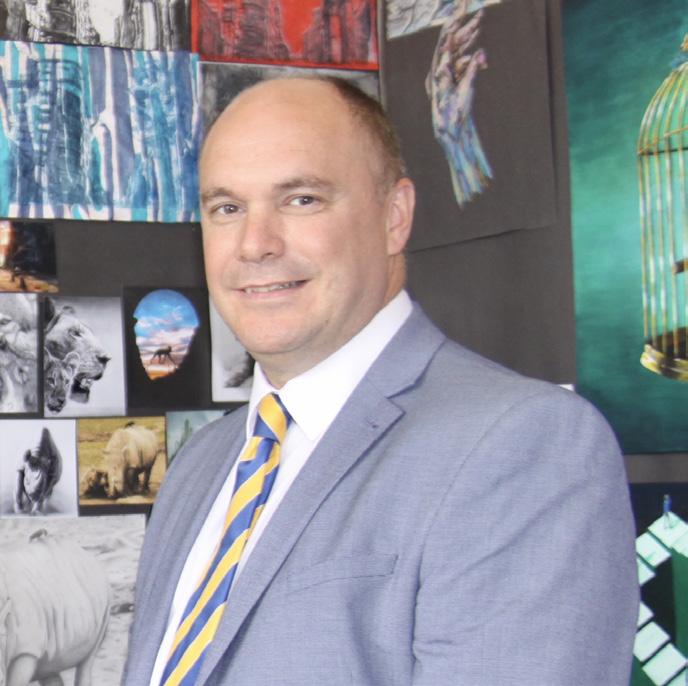
12 minute read
CMgr: How these Chartered Managers are delivering change
by CMI_
Mark Rowland
With contributions from this year’s Chartered Manager of the Year, honourable mention and shortlisted candidates
How to get buy-in

Manisha Mistry
In large organisations, it can be hard to get buy-in for yet another new initiative. The answer, says Chartered Manager of the Year Manisha Mistry CMgr MCMI, is to learn the lesson of social media platforms and let people come to you
There was a point early on in Manisha Mistry’s project to deliver a digital-first mindset at Rolls-Royce when it didn’t seem to be working. The initiative involved reaching across the entire organisation – around 54,000 people. Mistry and her team had identified the need for regional digital champions and asked managers to nominate them.
This turned out to be the wrong move. Progress was slow, and the team wasn’t seeing the expected level of engagement from the regional champions. “We made it feel like a role, but in the wrong way. It meant that the names that were coming in were selected, but they didn’t appreciate why or the value of it in addition to their day job.”
Mistry works within Rolls-Royce’s R2 Data Labs – effectively a startup within the massive international organisation. It helps the organisation enhance or apply new data practices and solutions, supporting and accelerating the larger organisation’s digital development.
“When you’ve only got a team of four and you’re met with a global workforce that’s significantly larger, the first step is just unpicking it and understanding that you’re not going to get everyone on board,” Mistry explains. “That really helps, because then it’s about the best power-to-weight ratio of people you can directly influence, versus those who can’t be influenced.”
Mistry and her team did this by creating networks, drawing on the power of social media platforms such as LinkedIn and Facebook to connect people, but using internal communication tools. “It’s not always necessarily about your direct influence – it’s the influence of those around you,” Mistry explains.
After the initial setback with the regional champions, Mistry’s team started rethinking the overall approach. The conclusion was that the most technically savvy people weren’t necessarily the best choices. Instead, those who were most curious about the technology and the most willing to learn would deliver the most engagement. “They don’t necessarily have to be experts, but they have to want to go out and learn, play and experiment. It’s not a typical corporate approach. It has more in common with early-years education, learning through play.”
By opening the initiative up for people to come forward voluntarily, Mistry had accelerated the speed of the change. The next step was to look at how the team could really support the new champions. This included providing sponsorship for the champions for the time they put into the initiative and celebrating their achievements within their regions. “People want a sense of reward in what they’re doing. It makes them proud, and then you start to see more digital-first behaviours develop off the back of that,” Mistry says.

This turned out to be a game-changer. As employees started to feel that they could influence the future of the organisation, they became more proactive. Leaders across the organisation started talking about their team’s achievements in ways that wouldn’t have happened otherwise. “It didn’t feel technical, it didn’t feel top-down, and it sparked new ideas about how we could do things differently when it comes to learning and development.”
The initiative ended up delivering 151 per cent of its employee engagement target and 173 per cent of its learning delivery target. “It was incredible,” Mistry says. “You start getting people giving you ideas, rather than us soliciting them. We felt a little overwhelmed by what we were getting. The challenge became turning everything we had into easily consumable content. It was a wonderful problem to have.”
Tough staffing decisions = big cultural gains

Dalton Leong
As the new CEO of The Children’s Trust, Dalton Leong CMgr CCMI had to make some very difficult decisions. By holding his nerve, he was able to turn the organisation around
When Dalton Leong started at The Children’s Trust, it was in need of an upgrade. The previous CEO had been in place for 21 years, and while he had done an excellent job, things had moved on in the intervening years. “It was effectively his organisation,” Leong recalls. “It’s inevitable with any leader who’s in a position for that long.”
The charity’s culture was inherently linked to that previous CEO. Leong had to unravel it and create a new one that suited both his values as a leader and the requirements for success in the modern age. He brought a more corporate way of thinking to the charity, which allowed him to see things differently. “There was a need to do away with the silo mentality that might have worked well in the past but is less effective now.”
That silo mentality didn’t just exist between departments, but sometimes within the departments themselves. It didn’t fit with the way that Leong – very much a collaborative leader – wanted to work.
A lot of the change came down to finding the right people. Leong’s biggest challenge was filling the role of finance director. He describes it as the toughest hiring challenge of his career. It took several failed attempts to find the right fit for the role before he found the right person.
By that point, an interim FD had been appointed to the role. Some people in the leadership team were lobbying for them to stay on. Leong stuck to his guns. “When I look back, what was particularly pleasing was my resilience in the face of pressure; knowing I hadn’t got it right yet, but not giving up. Now we’re reaping the rewards.”
With the right people in place, the organisation started to thrive. Regulatory ratings went from “Requires improvement” to “Outstanding”. The culture is now more open and collaborative. The organisation is financially sustainable and is exploring new services and new ways of delivering them. “Leadership is largely about creating a strong team around you, being clear and assertive about your expectations and, most importantly, doing it in an ethical way,” Leong says.
Why deep thinking pays

Grant Campbell
Grant Campbell CMgr FCMI is a natural reflecter. As an academic, it’s in his blood. But even for someone in academic circles he’s an extremely deep thinker. Leading the new chemical engineering programmes at the University of Huddersfield was a perfect fit for his precise and analytical brain.
“I give a lot of talks, and if somebody were to ask me how long it took to prepare a particular talk, I might say 20 years!” he says. “It probably took me a few hours to pull together the presentation, but I’ve been thinking about the topic for much longer.”
Campbell is just as precise in his reflections. He types them out, reviews them and rewrites them until he’s happy with their accuracy and depth. His previous reflections informed his work at Huddersfield as he tried to create some of the most distinctive chemical engineering courses in the country.
Writing out his thoughts helps Campbell hone his skills. “I find I can only teach by writing my own textbook first,” he explains. “Not a long textbook, but a booklet that I give out to the students. They’re quite wordy, because I’m going through my thought processes, but the students like them because they take them through the thought processes as well.”
How to blend introverts and extroverts

Debbie Carless
As an extrovert, Debbie Carless CMgr MCMI has not enjoyed the lockdown over the past few months. Her team – the estates helpdesk at Solent University – is mostly made up of introverts. While they have seemingly coped better than she has, she spends a lot of time checking that they’re OK. It’s something that comes naturally to her.
“I read people as I work the room and make sure that everyone’s OK,” she says. “I’m aware of other people outside of my team, and I do a lot of mentoring for people informally. People come to me with issues, and I use coaching techniques to help them find a solution themselves.”
While streamlining and digitising the estates helpdesk at Solent University, one of Carless’s first big challenges was to repair a strained relationship between estates and IT. It stemmed from unresolved issues that had arisen during the last facilities management software update. The first meeting was tense, but Carless soon won them round by really listening to what they had to say.
“My strongest instinct is always to fix a problem. That’s always right at the front of my mind. But my experience has taught me that I should never assume I have the answer to fixing it. That needs to be drawn out from a good bit of understanding, which comes from listening to all the people involved.”
Transforming a toxic organisation

Ricky Massey
Glengormley high school in Newtownabbey, Northern Ireland made the Belfast Telegraph after a damning report put the spotlight on its bullying issues and low exam results. Then Ricky Massey CMgr FCMI came on board as headmaster.
Now, the school is in demand among local parents. Detoxifying the school started with a very honest meeting with staff, in which Massey laid out the school’s poor financial performance, falling enrolment, toxic brand and sub-par results. He then set out his vision for the school, and what everyone could do to make it happen. “When you’re honest with [people], trust them with the truth and give them a vision of improvement, they will come with you.”
One of the best ways to develop a good culture, says Massey, is to create a space where staff are empowered to understand and develop their strengths. This might benefit the individual more than the organisation at times, but when faced with the risk of staff moving on, it’s worth it.
“People think it’s easier to motivate people in the private sector because you can give them more money, but in my experience, that makes no difference. What definitely works is investing in staff’s CPD, and providing the right challenges and support mechanisms to encourage their development.”
Getting your people to step up

Jenny Taylor
Becoming an apprenticeship employer-provider should be fairly straightforward when you’re already providing lots of internal training – or so Jenny Taylor CMgr MCMI had thought. She has headed up IBM’s graduate training and apprenticeship programme since 2004, with a well-established team and processes.
Once the organisation started on the project, though, Taylor realised there was much more to it. “Although we prepared thoroughly, there were still new requirements that we hadn’t considered. It was a huge amount of work and a steep learning curve for everyone involved.”
The main challenge was the need to create a new governance structure to oversee the apprenticeships. This primarily came down to selecting the right people for the right roles. “We had a management system, but it needed to be much more than that,” says Taylor. “We had to think about all of the work involved, define the roles clearly and then find the right people.”
All these roles were to be filled by existing team members, so Taylor had to encourage people to step up. “For example, for the new quality management role, some members of the team didn’t feel they had the confidence to do that, even if I thought they would be perfect.”
Under this new governance structure, Taylor and her team have since passed the initial Ofsted inspection and so far have a 100 per cent pass rate for apprentices, including 100 per cent distinctions on the Junior Management Consultancy Standard. “It’s just phenomenal,” Taylor says. “We’re obviously doing something right.”
How to manage across the generations

Paul Hughes
When Paul Hughes CMgr MCMI joined the Australian Air Force Cadets as commander of 3 Wing, he found little-to-no handover, low morale and not much direction. He knew he had to make some significant changes to turn things around. The big challenge was getting everyone on the same page – no mean feat when you have a team of more than 2,600 people, with ages ranging from 13 to 78. “I had to adapt my style of communication for each age group. They listen and communicate differently,” he explains.
The 50-plus age group was, perhaps unsurprisingly, the most set in its ways. It’s hard to argue that things need to be done differently when faced with more than 20 years of experience. Hughes encouraged those who had bought into his vision to encourage the more sceptical members of the team. The next move was to prove the plan worked with some quick wins.

Finally, Hughes uses what he calls “positive manipulation” to win hearts and minds and encourage people to do what’s needed. “You have to take quite a charismatic approach. They’ve got to believe in you as an individual, and they’ve got to believe in the direction you want to take the organisation.”
How to be a wellbeing-first manager

Sarah Gardner
Coalo had not long been a private entity when Sarah Gardner CMgr FCMI joined. It was previously part of Hounslow Borough Council, and Gardner was tasked with setting up the IT systems and processes. However, she wanted to make a difference in other ways.
Coalo’s approach to mental health and wellbeing was quite traditional. As a big advocate of strong mental health, wellbeing and social value policies, Gardner approached the MD and asked if she could write the strategies, making a strong business case for why it was necessary. “I’m all about trying to improve things,” she says. “Whether it’s a work situation, a company, a project or people’s lives.”
Having written the strategies, Gardner ran awareness days and training for staff to ensure it was properly implemented, drawing on her previous experience in project and change management.
She then moved onto other projects, helping to shape Coalo’s corporate strategy, working on its rebranding, redesigning the website and managing the company’s marketing.
Gardner is equally driven in her spare time. She is a trustee of the local food bank, vice chair of credit union Thamesbank and a commissioned officer in the Army Cadet Force. She really advocates making your free time count. “If there’s a purpose, I find the time for it. I get up early in the mornings. I look for opportunities to work and try not to waste any time.”










